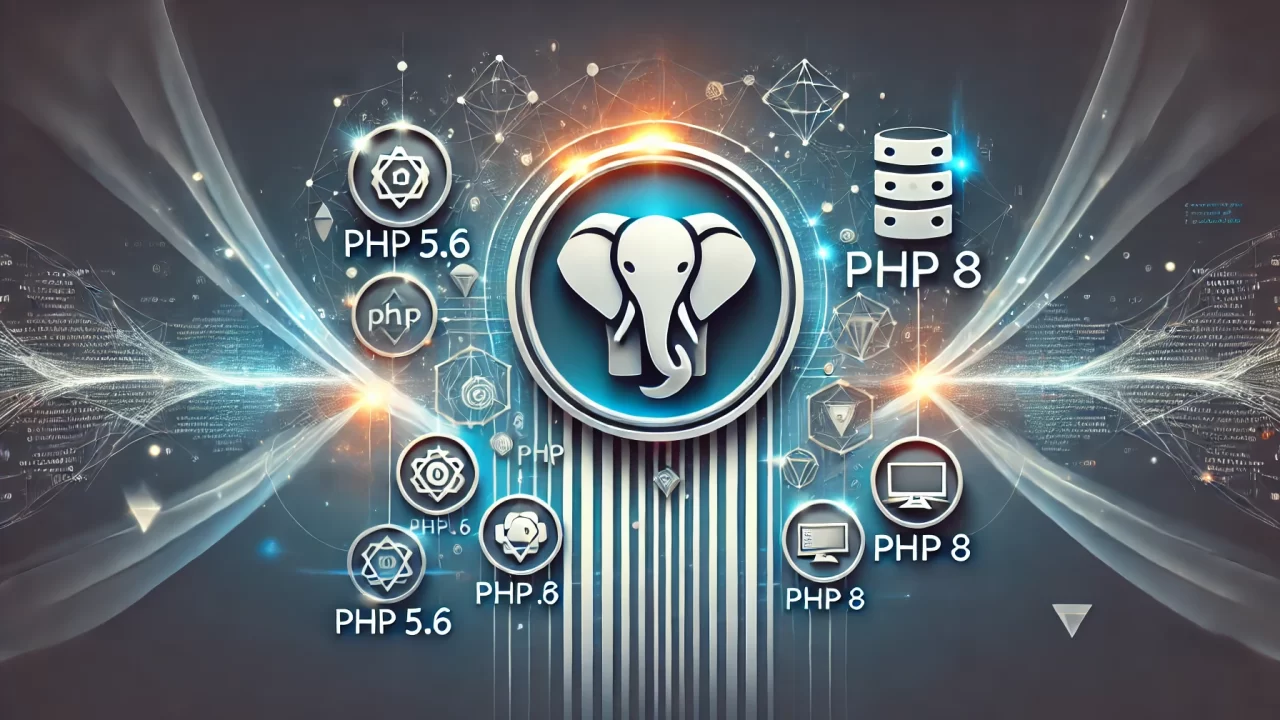Introduction
PHP is one of the most popular languages in web development, powering countless websites and applications over the past decades. For many developers, PHP 5.6 represented a “golden era,” while PHP 8 today redefines what we can expect from the language in terms of performance, security, and modernity. In this article, I’ll explore why PHP 5.6 became so iconic and how PHP 8 has transformed the language.
Why was PHP 5.6 so iconic?
Released in 2014, PHP 5.6 marked the pinnacle of an era when PHP was widely adopted but still faced criticism for technical limitations and performance issues. Yet, it became a “favorite” for specific reasons:
-
Stability and legacy support
- Many companies and projects were already running on PHP 5.x, and PHP 5.6 brought incremental improvements without breaking compatibility. It became the final stepping stone before the leap to PHP 7.
-
Practical features
- PHP 5.6 introduced small but highly useful improvements, such as:
- Variadic functions (
...$args) - Exponentiation operator (
**) - Enhanced support for
json_encode()andjson_decode()
- Variadic functions (
- These changes, while incremental, made developers’ daily tasks much easier.
- PHP 5.6 introduced small but highly useful improvements, such as:
-
Extended lifecycle
- PHP 5.6 received official support until 2019 (!), allowing companies to stay on this version for years while planning their migration to PHP 7.
-
Massive adoption
- Popular CMS platforms like WordPress, Joomla, and Drupal were built on PHP 5.6, solidifying its popularity and spreading its use worldwide.
The revolution with PHP 8
The leap to PHP 7 was already a milestone in terms of performance (thanks to Zend Engine 3), but PHP 8 has ushered the language into a new era of modernity.
-
Unmatched performance
- PHP 8 introduced substantial optimizations, leveraging JIT (Just-In-Time) compilation to drastically improve execution speed, especially for computationally heavy tasks.
-
Developer-friendly features
- The language now feels more modern and robust with features like:
- Union types
- Named arguments
- Attributes (annotations)
- Match expressions
- Error-handling improvements
- The language now feels more modern and robust with features like:
-
Security enhancements
- PHP 8 focuses on better type safety and error handling, reducing common vulnerabilities that plagued earlier versions.
-
Ecosystem evolution
- Frameworks and libraries have embraced PHP 8, ensuring developers can leverage its capabilities to build faster, more secure, and more maintainable applications.
The journey from PHP 5.6 to PHP 8
The transition from PHP 5.6 to PHP 8 highlights the evolution of PHP from a scripting language often criticized for being “messy” to a modern, high-performance, and enterprise-ready programming tool. While PHP 5.6 will always hold a special place in history for its widespread adoption, PHP 8 represents a bold step forward, redefining how we build and scale web applications.
Final Thoughts
As developers, we’ve come a long way since the days of PHP 5.6. While it served its purpose and dominated an era, PHP 8 demonstrates the language’s ability to adapt and innovate, securing its relevance in a rapidly changing tech landscape. If you’ve yet to embrace the features and improvements of PHP 8, there’s no better time than now to explore how it can revolutionize your projects.
Let’s discuss! How has your experience been transitioning from PHP 5.6 to PHP 8? Share your thoughts in the comments.
